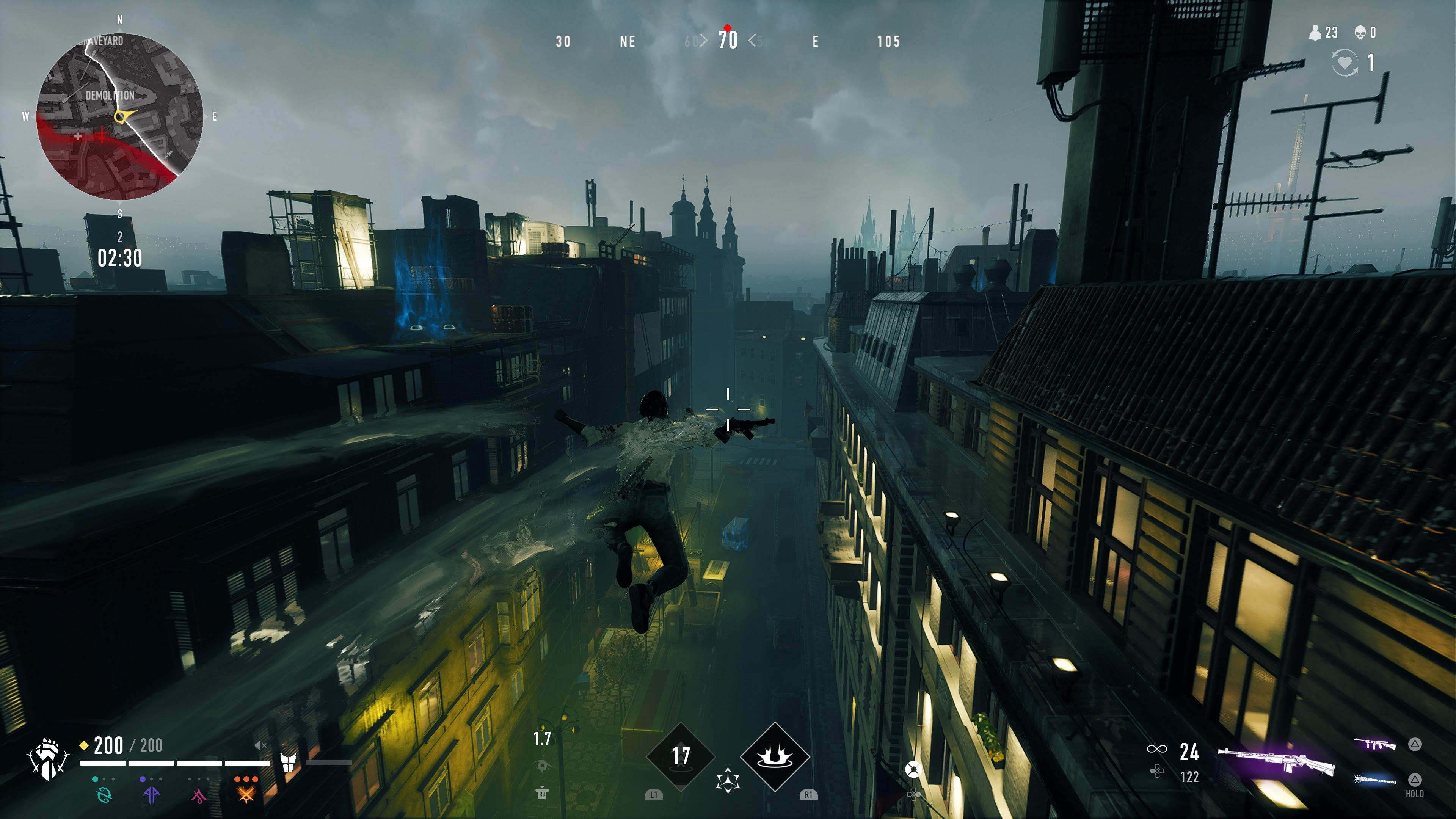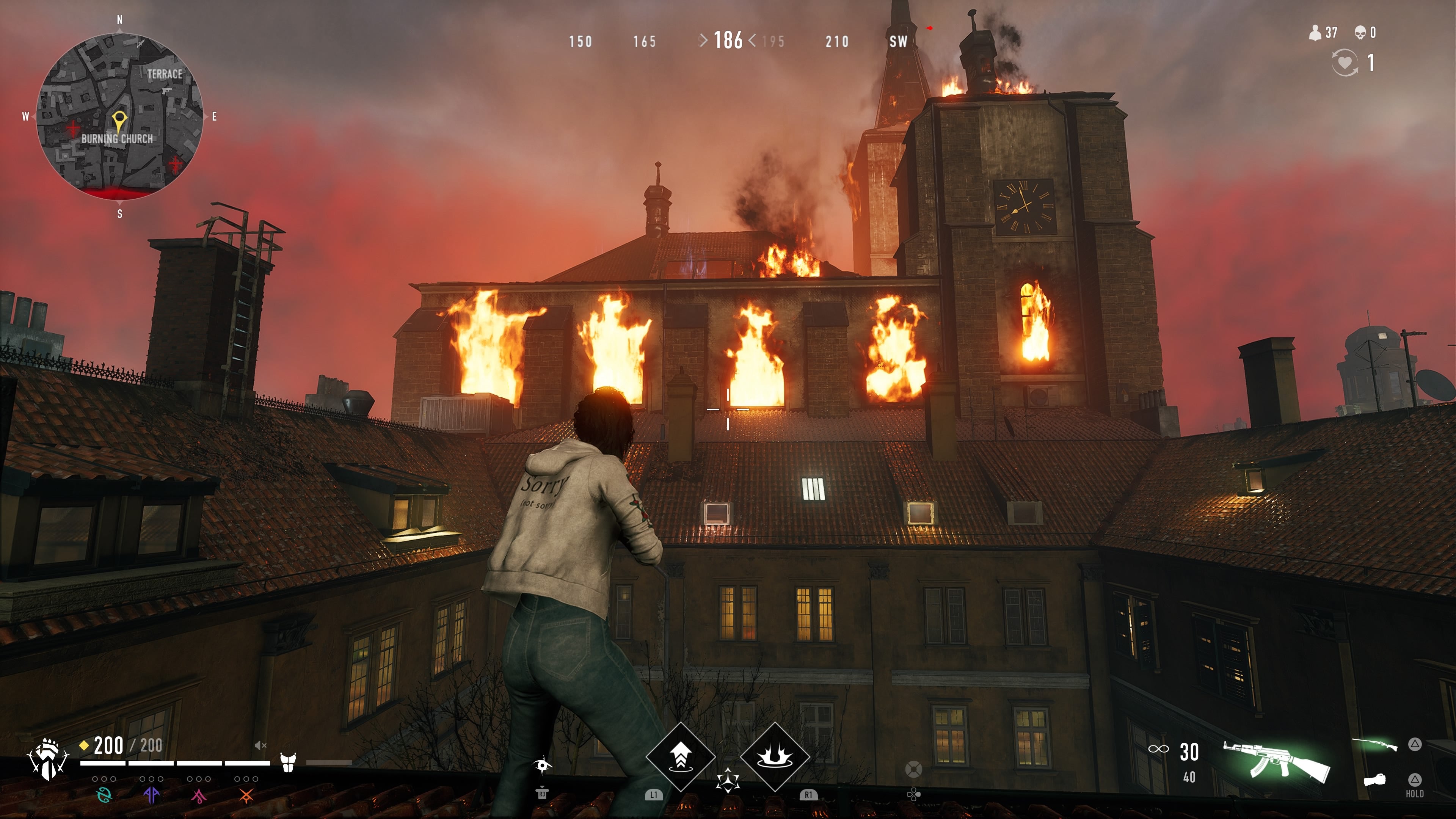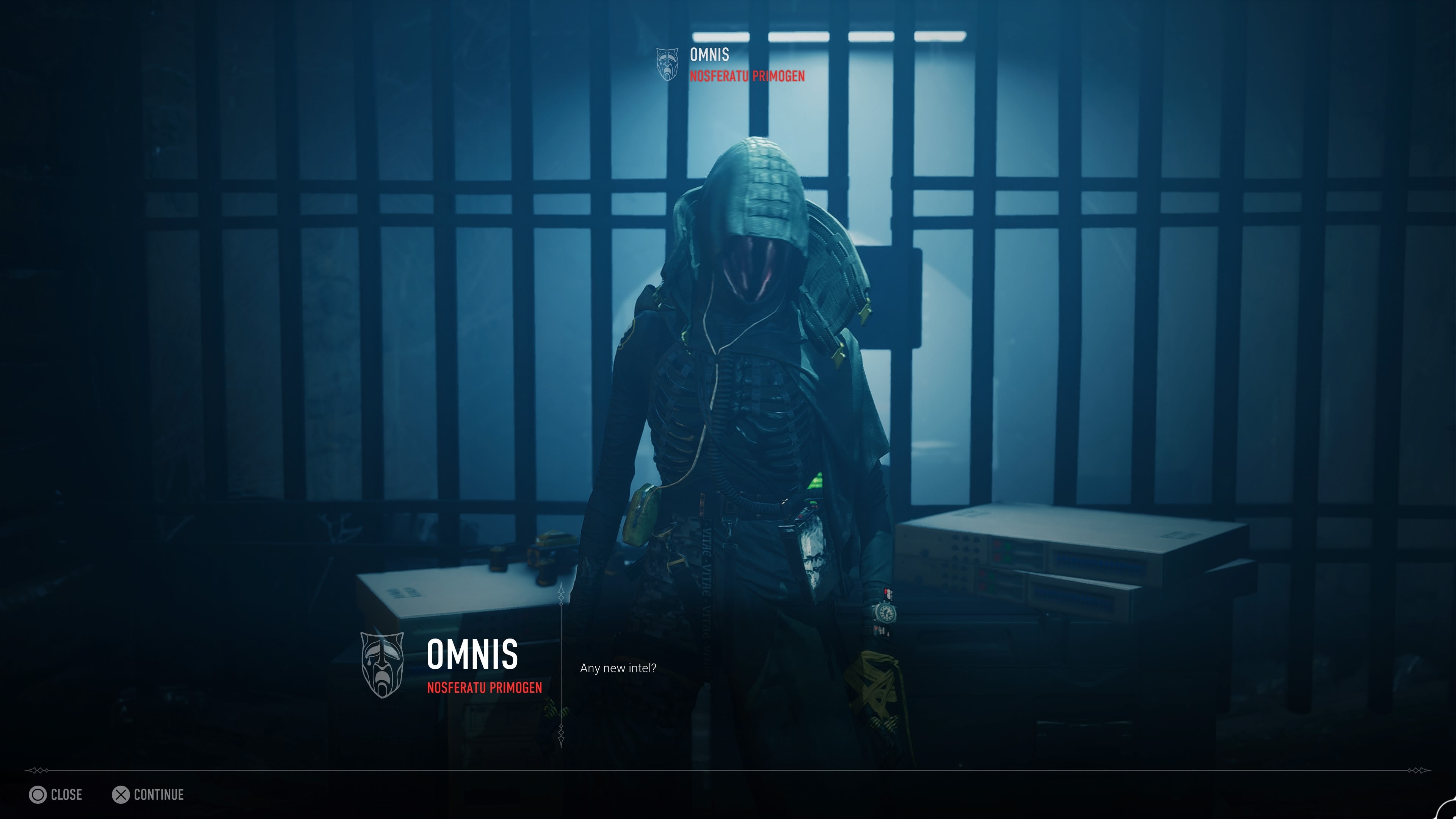It seemed to me like mixing oil and water, and while I do think the game is lacking in some places that’ll hurt for Masquerade fans, I came away following consecutive days glued to this title pleasantly surprised by its merits. Sharkmob has, somehow, made it work. Let’s start with Vampire the Masquerade: Bloodhunt’s elevator pitch. The game is a third-person, free-to-play Battle Royale set on the dark streets of modern day Prague. You, as a Vampire belonging to one of four clans, venture out and fight against other creatures of the night until you or your team are the last ones standing. Once you’re out of a match you return to Elysium, a social hub where you can interact with other players, pick up quests from a range of NPCs, and customise your character. As such the game is sort of split into two parts, the Battle Royale itself where all the action and actual progression takes place, and the hub where some of the game’s RPG roots show their teeth. The Battle Royale itself – y’know, going out and fighting against other players – is fantastic. It’s the aspect of the game the development team nailed the best, and it did so in almost all regards. The game, even at an entry level, showers you with abilities that provide terrific freedom of movement; you can scale buildings with ease and move around without impairment, and this mobility opens up even further after investing some time into the traversal systems. It all leads to hectic fights (that reach the bar set by other highly-mobile battle royales like Apex Legends) as opposing players dash, climb, slide, and leap around each other in a matter of seconds. As a Vampire: The Masquerade game, you also get a selection of classes – or archetypes – that pack unique skills and passives which go a long way in defining the ideal playstyle for each. Right now, there are seven in total across four clans. As you’d imagine, each clan has archetypes that fit in with the background they belong to; Brujah are headstrong fighters able to quickly get into battles, while Toreador are easy-on-the-eyes charmers and deceivers with tricky abilities that easily confuse other players. As of right now, I wouldn’t say any one class feels particularly unbalanced, which is important from a starting lineup. The classes, plus the random match modifiers that apply at the start of each game of Bloodhunt, allow for some genuine diversity in game flow and the approach you have to take if you want to win. Combine all this with a serviceable selection of weapons that each fulfil a certain combat purpose, alongside a ‘blood resonance’ system that allows you to gain powerful passive buffs from feeding on sucking on mortals on the streets, and there’s a dynamic here that I don’t quite think you can find elsewhere right now. As of writing, there’s no ranked mode, but once it’s there, I can totally see a dedicated community growing around the solid foundations present in what Sharkmob has concocted. The map itself, a modern day rain-slicked Prague, is a nest of interlaced alleyways and sloping rooftops. Ageing Gothic structures clash with more modern construction, while the different regions are lit in subtle colouring so that leaping between areas feels like moving through scenes in a John Wick movie. It would be so easy to create a map set in this universe as a boring bundle of bricks and bushes, but the environmental design team nails it here. It’s early days, but it might be my favourite map in a Battle Royale. If there’s one thing I found lacking with an otherwise stellar effort, it’s The Entity. This is a PvE force present in Prague that all players can take on at a variety of camps. Judging by what we’re told in the story, as well as promotional material, they’re a big deal. Out in Prague, they’re a good source of loot, and additional blood resonance points, sure. But they’re just guys with burst rifles. Yeah, they can take you out if you aren’t paying attention, but they’re hardly the threat you expect them to be. Even the addition of sword-wielding Entity soldiers, like we see in trailers, would mix things up enough to bring some of that danger to these otherwise lacklustre enemies. It’s something I’d like to see explored more in future seasons. Speaking of, let’s talk about the live service aspect of the game. Yes, this game has a battle pass and heaps of paid cosmetics. The battle pass itself is your standard XP-based affair, with daily and seasonal challenges that provide big injections of progress for those who’re keen to climb the ranks quickly. You don’t get a huge amount as a free player – aside from the occasional piercing, tattoo, or basic clothing option – but as a free-to-play title without a loot box option, that isn’t entirely surprising. If you really want to explore the character customisation to a decent extent you’ll be quite limited with options unless you bust your wallet out. You have around two or three months’ content in a single season, which is about in-line with other high-profile games, and judging from the what’s happened in early access (and interviews we’ve done with the team), we can expect new quests, cosmetics, and other visual changes as seasons hit. I would, of course, like to see Prague itself change in coming seasons, rather than having most significant additions limited to just the social hub and what cosmetics I can buy. It would be cool to see the team continue to disfigure Prague as the narrative gets more hectic. With all this in mind, the game loses some of its vigour when it comes down to the social hub: Elysium. It’s at the heart of the game, and while the area itself is decent enough thanks to its gothic club aesthetic and clear room for expansion as the game grows over the coming years, it’s not the home for a flowing narrative I had hoped it would be. Obviously, to expect a sweeping story in a Battle Royale as we’ve seen in other Vampire: The Masquerade games would be wholly unrealistic. However, even coming in with excitement levels reigned back, the quests that play a big part in getting a player caught up with what’s going on in Prague are painfully basic. Here’s an example: one of the clan leaders in Elysium wants you to go out and find a VHS tape. Okay, there’s room for some interest here, and given enough clues it could prove to be quite fun right? So you head down and grab a bag containing the tape, but it turns out it’s the wrong bag when you get back to the quest-giver. So you have to head out again to the same spot and grab another bag… but the tape’s not in there either, so you’ve gotta head back out again to finally grab the tape. Why do I have to return to the hub to look inside a bag and find it’s empty? Why does this feel like homework? In any other game, you could scratch this off as just a bit of side content that’s best ignored, but this chore-like cycle is true of every quest here. I can only hope, as time moves forward, extra time is spent making these a touch more invigorating. So, as an initial release, how does the game fare? It’s solid! Thanks in large part to the exceptional action present here, the act of booting it up, hopping into a match or two either solo or with friends, and battling it out is brilliant. That alone provides a buffer that dampens the negative impression some of the game’s failings leave behind. Add to this the steady addition of new modes – including a ranked mode and a duo’s mode which was literally just added as I’m writing this – and this title can act as a great evening game to friend groups searching for their next big game to tide them over during upcoming dry months. Can it tackle some of the greats in the genre? Your Warzones and Fortnites? Absolutely not, but that’s obviously not the goal here. It will, however, surely tempt a portion of players away. Hopefully, the players it can suck away from other games is enough to slowly grow a community here. With that, and a slow drip of new archetypes, weapons, and other significant changes I can totally see Vampire: The Masquerade – Bloodhunt becoming this slow burner you hear about every now and again. A great game to jump in and try right now, and a title you should keep an eye on in the years to come.



